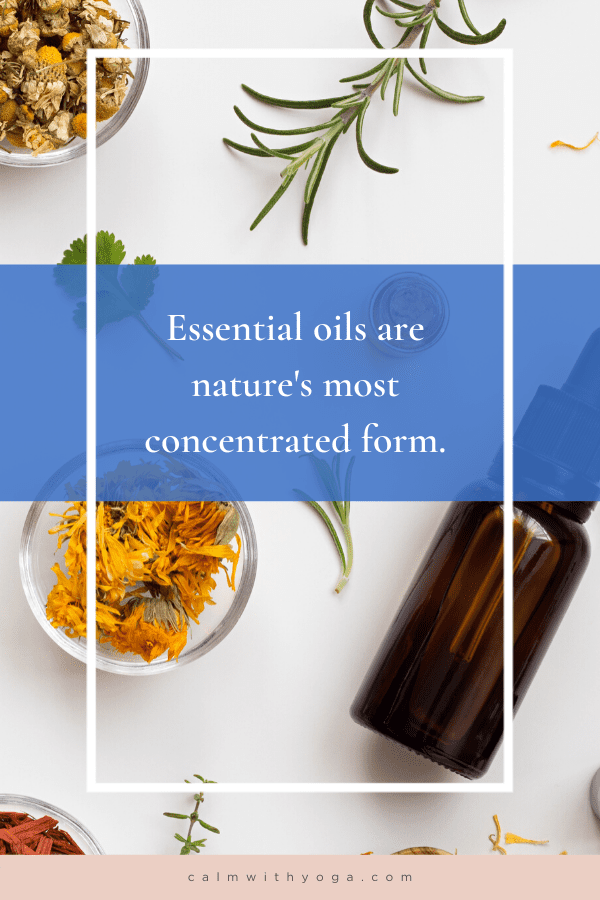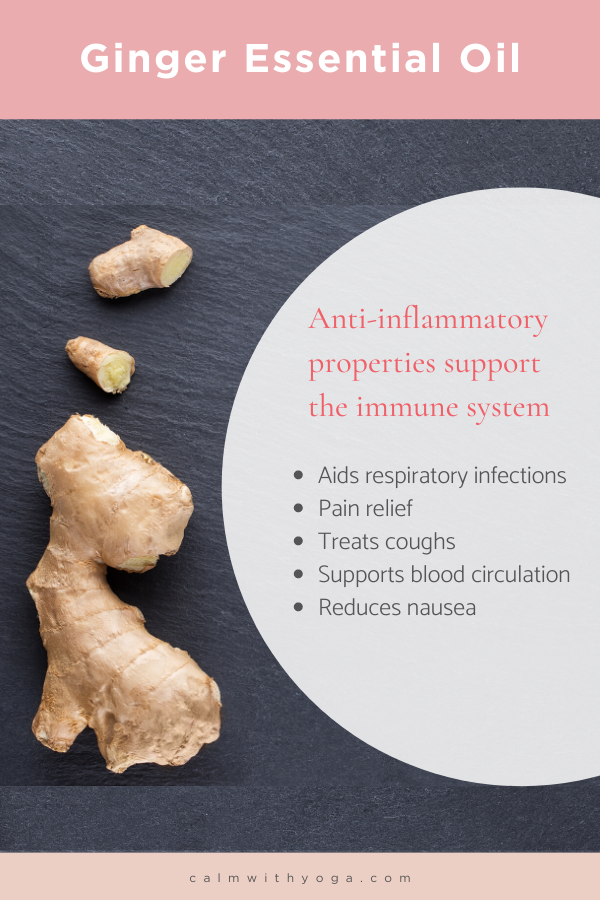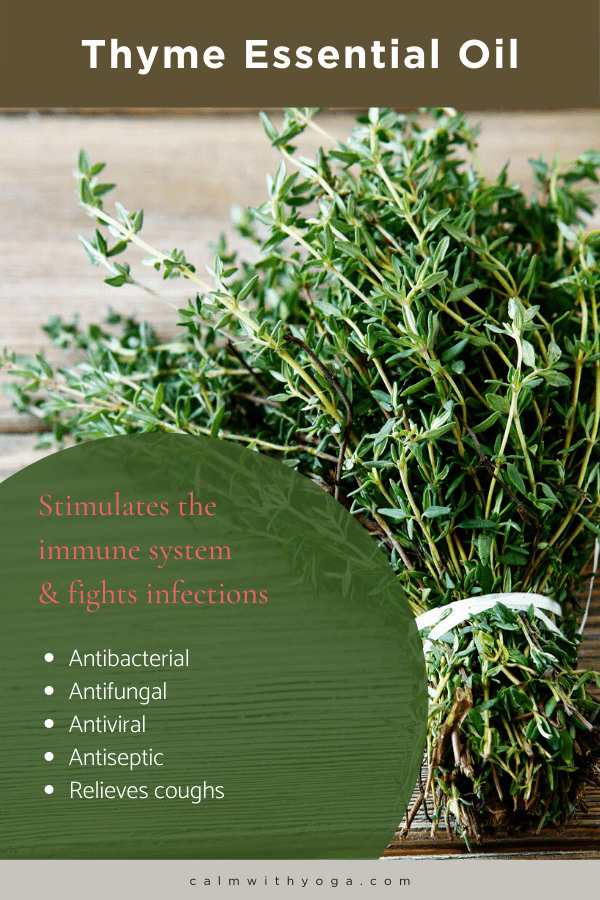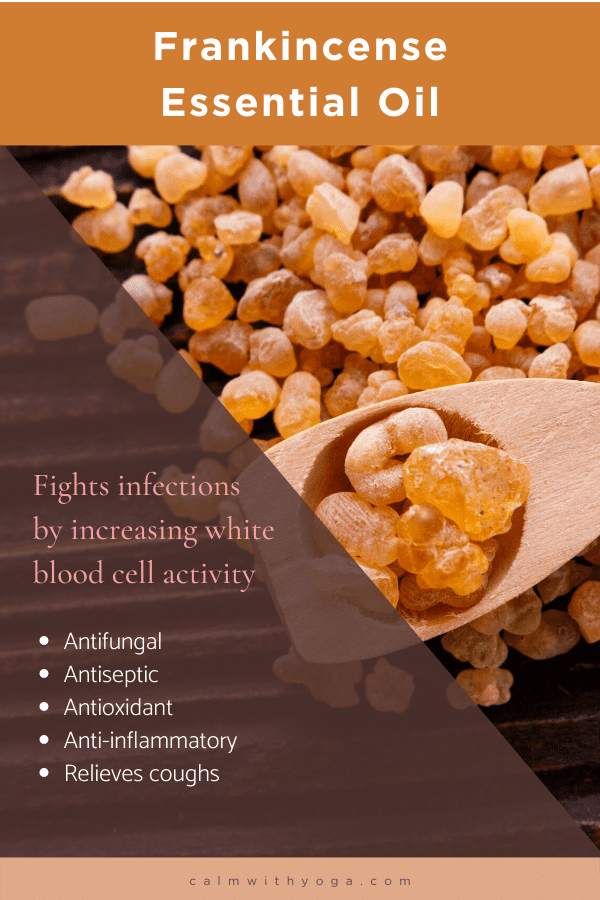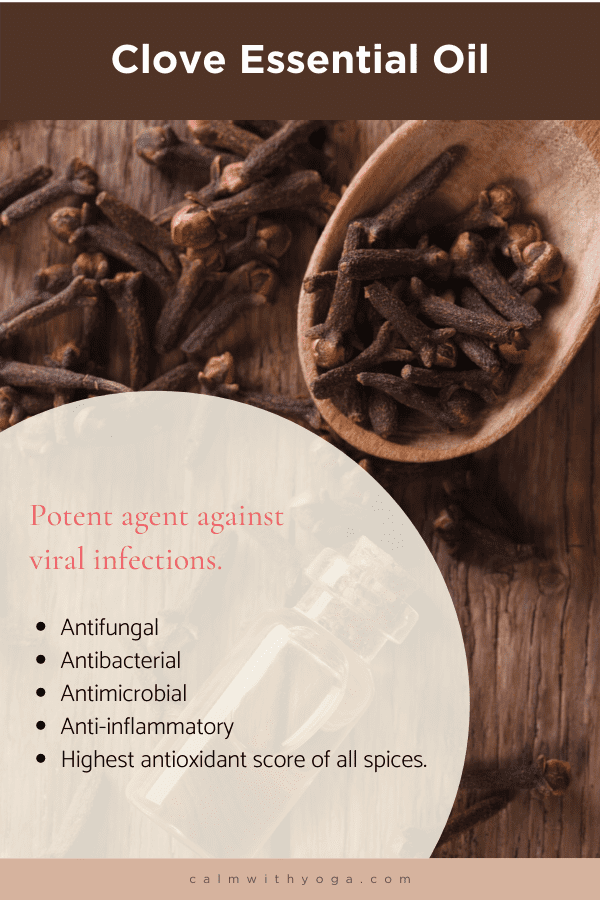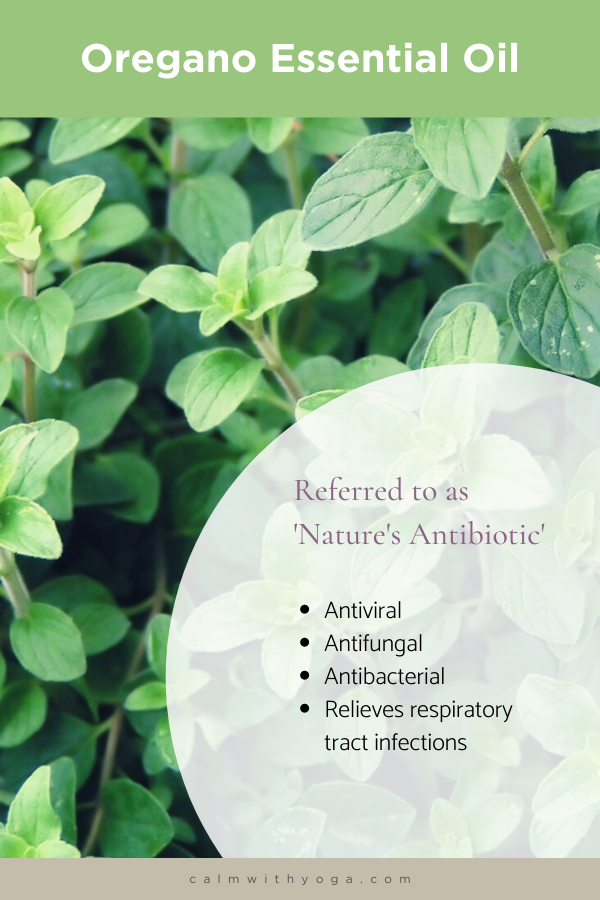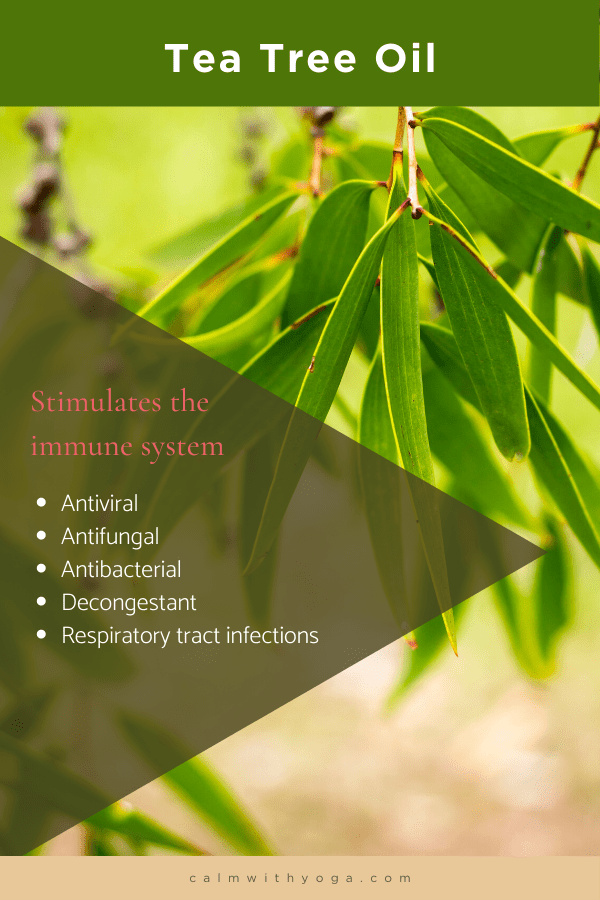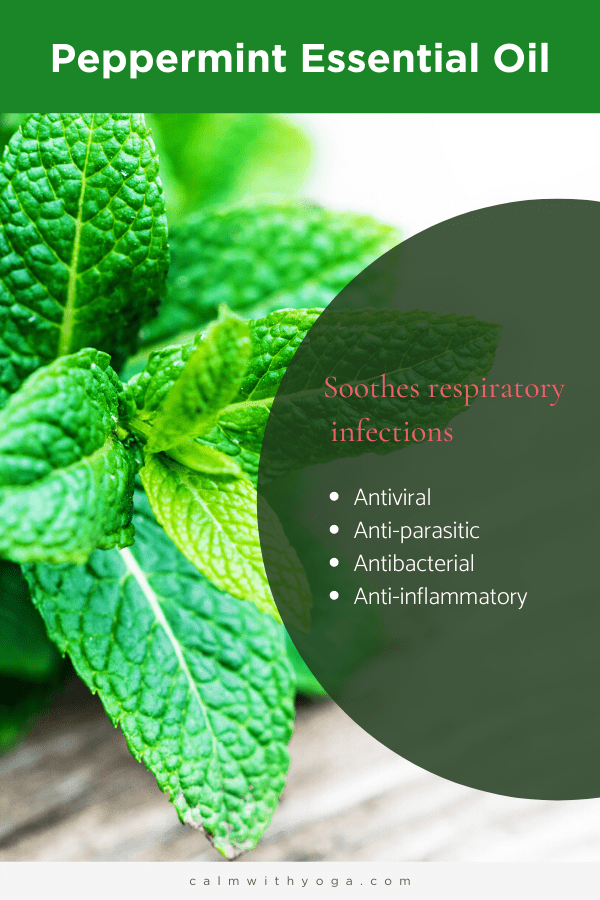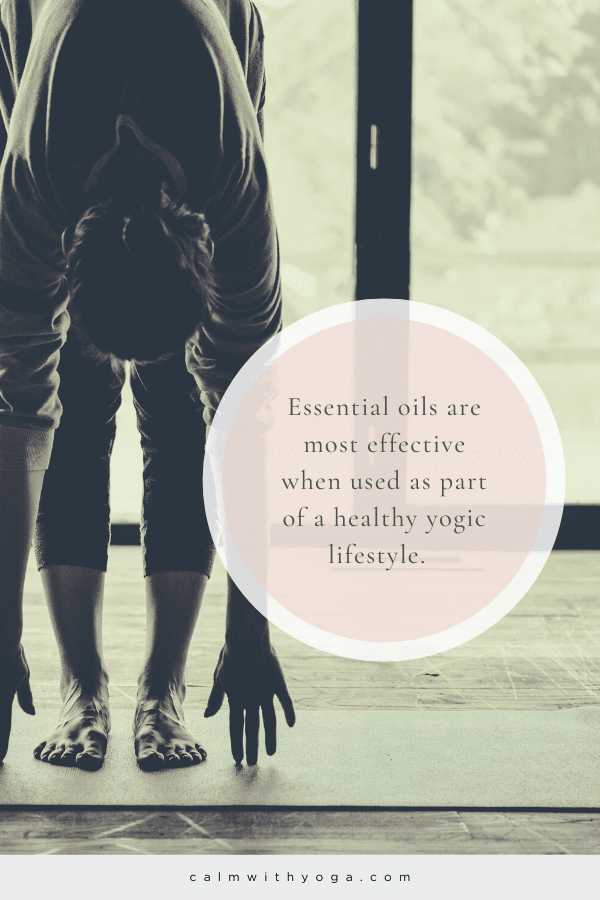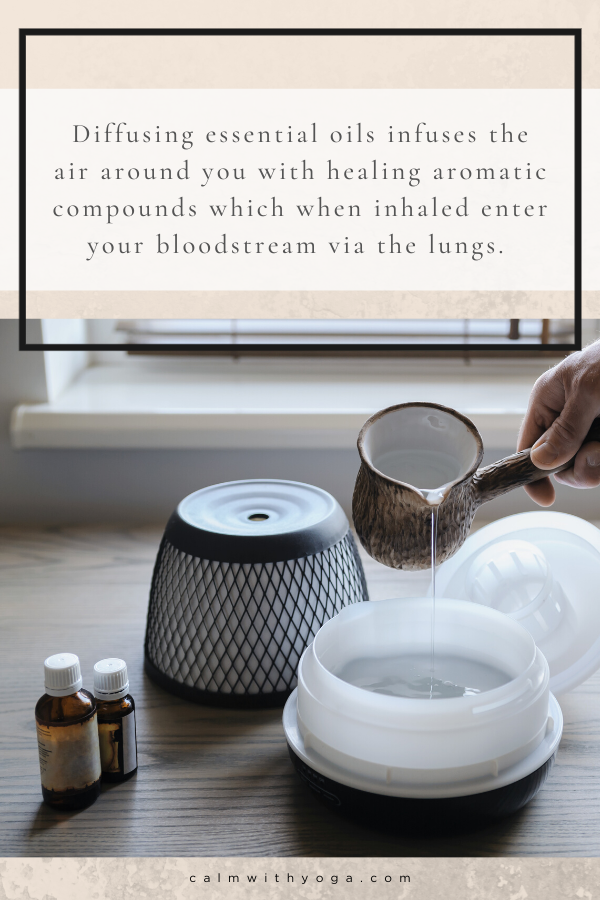Therapeutic properties include: antibacterial, antifungal, anti-inflammatory, antiseptic, treat coughs (expectorant), and clears mucus (mucolytic). MC Top Pick
Not safe for babies and children under 6 years old Not safe for pregnant and breastfeeding mamas If you have high blood pressure If you have epilepsy If you suffer from frequent headaches or migraines
It supports immune function and is highly anti-inflammatory. Other therapeutic properties are: reduce nausea, pain relief (anesthetic), supports blood circulation (anti-coagulant), digestive aid, treat coughs (expectorant), and reduces respiratory infections. MC Top Pick
Use on children 2+ years of age, not younger. Avoid sunlight exposure 12 hours after use. Might cause skin irritation.
It offers immune support by stimulating lymphatic drainage. It’s antibacterial, antifungal, antimicrobial, antiseptic, anti-inflammatory, relieves muscle spasms (antispasmodic), and can aid digestion. MC Top Pick
Cold-pressed lemon oil is phototoxic; steam distilled lemon oil is not. If you’re using cold-pressed lemon oil, avoid sunlight exposure 12 hours after use. Topical use may irritate sensitive skin. Perform a patch test. Use within six months of purchasing.
Boosts immunity by fighting infections and stimulating the immune system. It’s also antibacterial, antifungal, antiviral, antiseptic, relieves coughs (expectorant), and provides pain relief (analgesic). MC Top Pick
Not suitable for children under 2 years of age. Avoid if you have high blood pressure.
Supports your immune system by increasing white blood cell activity so your body fights infections better. It’s also an antifungal, anti-inflammatory, antiseptic, antioxidant, provides pain relief (analgesic), relieves coughs (expectorant), aids digestion, and calms the nervous system (sedative). MC Top Pick
Not suitable for children under 2 years of age.
Considered a potent agent against viral infections. Highly anti-inflammatory because it boasts the highest antioxidant score among herbs and spices. It’s also antibacterial, antimicrobial, and antifungal. It promotes gum health, good digestion, and helps relieve pain. MC Top Pick
Not safe for pregnant or breastfeeding mamas. Not safe for babies and children under 2 years of age. Avoid prolonged use. Don’t apply undiluted on skin. May cause skin irritation; perform a patch test.
Supports immunity by being anti-bacterial, anti-fungal, and antioxidant. It’s also antiseptic, antiarthritic, decongestant, and relieves coughs (expectorant). MC Top Pick
Not safe for babies and children under 6 years old Not safe for pregnant and breastfeeding mamas If you have high blood pressure If you have epilepsy Toxic if ingested (topical use only)
Often referred to as “nature’s antibiotic,” Oregano boasts potent anti-bacterial, anti-fungal, and anti-viral properties. Its active ingredients help support both the immune system and the respiratory system. Therapeutic uses include viral infections, bacterial infections, and respiratory tract infections. MC Top Pick
Not safe for babies and children under 2 years old Not safe for pregnant and breastfeeding mamas Avoid if you are taking multiple medications May cause skin irritation; perform a patch test.
Stimulates the immune system and is a powerful anti-bacterial, anti-fungal, anti-viral, and anti-microbial. As a powerful decongestant, it’s primarily used for relieving colds and respiratory tract infections, bronchitis, rhinitis, sinusitis, and laryngitis. MC Top Pick
Not safe for babies under 6 months old Toxic if ingested (topical use only) May cause skin irritation (perform a patch test) Avoid contact with eyes and mucus membranes
Soothes respiratory infections by promoting respiratory cleansing. Combats viral and fungal infections because it is also anti-bacterial, anti-viral, anti-inflammatory, and anti-parasitic. MC Top Pick
Not safe for babies and children under 6 years old Not safe for pregnant and breastfeeding mamas If you have high blood pressure May cause skin irritation (perform a patch test) Avoid contact with eyes and mucus membranes
Why People Are Turning To Essential Oils for Immune Support
Essential oils (EOs) are highly concentrated aromatic compounds extracted from tree or plant material such as bark, leaves, flowers, roots, resin, fruit, or nut. They are considered a form of herbal medicine and holistic healing, and their therapeutic application is often referred to as aromatherapy. Over the last decade, there’s been increased attention on EOs as effective ways to improve health and well-being. There’s also been a growing amount of laboratory research data demonstrating the efficacy of EOs as agents of healing due to their antibacterial, antifungal, antiviral, immune-boosting, anti-inflammatory, and antimicrobial properties. The ten powerful essential oils mentioned above are especially useful during cold and flu seasons. Given the current global coronavirus (COVID-19) pandemic, it’s more important than ever for your family to maintain a healthy immune system. In order to understand how EOs can strengthen immunity, it’s important to have a general idea of how immune function works. Think of your immune system as your own personal defense army whose sole purpose is to protect you from threats such as harmful bacteria, viruses, parasites, and fungi (aka pathogens). This defense army is a complex network of different organs, glands, tissues, and various types of cells. Approximately 70% of your immune system is located within the folds of your gut, which makes gut health an important part of overall immune health. (1) Think of each immune cell as a soldier in this army, and the main players are white blood cells (aka leukocytes). These soldiers circulate throughout your blood vessels and lymphatic channels and are on constant patrol – always on the lookout for potential invaders. White blood cells (WBC) are stored in:
the lymphatic system and lymph nodes bone marrow the thymus gland spleen
There are two types of white blood cells: These soldiers engulf and destroy invaders by literally eating them up. There are different types: macrophages, neutrophils, mast cells, and monocytes. Differentiate between invaders and exhibit a special ability to recognize and remember specific pathogens in case they return to attack again. Different types are T-cells, B-cells, and natural killer (NK) cells.
How EOs work to boost immunity:
Eucalyptus oil has been shown to stimulate the activity of certain immune cells. A study published in BMC Immunology found that eucalyptus increased human macrophage cell count and the cells’ ability to engulf and destroy invading pathogens after just 24 hours. (2) When applied topically, eucalyptus has been shown to effectively clear MRSA (Methicillin-resistant Staphylococcus aureus) bacterial infection in humans in a matter of days to weeks without antibiotic intervention. (3) When inhaled or taken orally, the major active component in eucalyptus, 1.8-cineole, can provide relief for inflammatory respiratory problems such as bronchitis, rhinosinusitis, asthma, and COPD (chronic obstructive pulmonary disease). (4) It can also reduce infection-induced mucus secretion. (5)
Ginger oil can help a compromised immune system by enhancing the antibody immune response according to a study on mice with compromised immunity. (6) A study on colorectal cancer patients found that pairing aromatherapy using ginger oil with three 45-minute sessions of Thai massage could increase lymphocyte (white blood cell) numbers by 11%. (7) Ginger is antiseptic, anti-inflammatory, and anti-bacterial which makes it exceptionally useful at fighting a wide range of infections – especially respiratory infections.
Lemon oil is effective at stimulating the lymphatic system, which as we’ve seen is an important part of the immune system because it stores and transports white blood cells throughout the body via lymph fluid. The more lymph is able to move freely throughout your body, the better your chances of fighting off infections and disease. Because lemon is also a potent antibacterial, antifungal, and antimicrobial, research shows it can kill various mold strains (8) and can even protect the human body from harmful bacteria such as E.coli and Salmonella. (9) One of the main therapeutic compounds in lemon oil, d-limonene, has shown to be a powerful antioxidant and anti-inflammatory. One study published in the Journal of Oleo Science found d-limonene to also exert cancer-fighting properties against different tumors in animal studies. (10)
Thyme has been used for thousands of years because of its potent medicinal properties. When scientists investigated 120 strains of bacteria they found that thyme exhibited strong activity again all 120 clinical strains, including antibiotic-resistant strains. (11) Thyme can help fight off fungal infections because it’s been shown to support human immune cells in killing the fungal strain Candida albicans. (12) In a study on livestock broiler chickens, thyme oil was found to increase antibody concentration while also stimulating immune cells’ ability to engulf and destroy pathogens. (13)
Frankincense is considered an ‘ancient oil,’ and now thanks to laboratory research it’s confirmed as a powerful immunity-aid due to its ability to destroy pathogens like bacteria, fungi, viruses, and even cancers. It can stimulate the immune system by fortifying immune cell activity, and one study found it to increase lymphocyte (white blood cell type) activity by 90%. (14) Thanks to its anti-tumor properties, Frankincense oil appears to induce cancer cell death in some studies. (15) Thanks to its anti-inflammatory properties, it’s also shown positive results for certain inflammatory diseases like bronchial asthma, rheumatoid arthritis, ulcerative colitis, and Crohn’s disease. (16) It’s such a potent antimicrobial, that when compared to the antibiotic Ciprofloxacin, Frankincense oil was found to be as effective as the antibiotic in combating certain bacterial infections. (17)
Rosemary is another antimicrobial powerhouse that aids the immune system by killing bacteria, viruses, fungi, etc. In the peer-reviewed journal Alternative Therapies in Health and Medicine, the active ingredients in rosemary oil, such as 1.8-cineole and linalool, were found to be effective against many harmful bacteria and fungi including E.coli and drug-resistant mutants of Candida albicans. (18) Other studies note that rosemary can also guard against harmful bacterial overgrowth such as Staphylococcus. (19)
Similar to Rosemary and many of the other EO mentioned here, clove is a stealth killer of parasites, viruses, fungi, and bacteria. It can combat E.coli, staph infections, and Candida albicans too. (18) Clove oil has also been shown to increase total leukocyte (white blood cell) count while also restoring antibody immunity in mice whose immune system was compromised. (20) In a study published on BMC Complementary & Alternative Medicine, an EO blend containing clove was found to protect against the influenza virus by reducing the number of infected cells by 90%. (21)
Multiple studies show that the active compounds in oregano – carvacrol and thymol – make the oil be one of nature’s most potent antibiotics. These studies confirm oregano oil’s antibacterial properties enhance the healing process in bacterial infections including antibiotic-resistant bacteria such as E.coli. (22) When tested against 11 strains of multi-drug resistant bacteria, the researchers concluded that oregano oil was a potential alternative to antibiotics for wound infections. (23) A 2014 study published in the Journal of Applied Microbiology found oregano oil to possess powerful antiviral properties against murine norovirus after an hour of exposure. (24)
This powerful oil has been used medicinally by Australia’s Aboriginal people for thousands of years. Its antiseptic properties make it effective at treating wounds and accelerating healing. As an antiviral, low concentrations of tea tree oil have been shown to inhibit herpes simplex virus (HSV) in cultured cells. (25) Studies also indicate it has a protective effect against influenza virus. (26) As an antibacterial, it’s proven effective against E.coli, Staph infections, Klebsiella, Prevotella, Streptococcus pyogenes, and many other pathogens. (27) As an antifungal, tea tree may help treat Candida infections by breaking down fungal cells’ membranes. (28) The main active ingredient in tea tree – Terpinen-4-ol – has also been shown to destroy and inhibit the growth of melanoma cells (a type of skin cancer). (29)
Peppermint is a potent antimicrobial, antiviral, and antioxidant. It can protect against pathogens such as E.coli and Klebsiella. (30) It has been found to regulate the immune system in animal studies. (31) (13) The active ingredients in peppermint – menthol, and menthone – can soothe the respiratory system, and as a natural decongestant, it can provide relief from sinus congestion. (32)
The Pros & Cons of Using EOs for Immunity
EOs are potent – a little goes a long way. For example, did you know that one tiny 15 ml bottle can contain about 75-45 lemons? Just one drop offers multiple active compounds that impact your health in a matter of moments. High-quality EOs should be 100% natural. This means you have direct access to nature’s pharmacy and healing plant wisdom. They are complex substances that we’re understanding in detail more and more. Over 3,000 compounds have been found in EOs so far. (33) If you use EOs mindfully and consume them with care, you’ll likely experience little to no side effects. (Unlike most pharmaceuticals.) Think of EOs as preventative health care that’s relatively affordable and accessible. And unlike pharmaceuticals, you can blend multiple oils to maximize or enhance their efficacy. When you use them safely, EOs can be an effective home remedy for many child-related conditions. You can use them as a first-step defense with your babies before turning to harsher medicines.
EOs are potent – unnecessarily high concentrations can cause them to become irritants and may even interfere with your body’s functioning. Unfortunately, there are many adulterated EO products out in the market that feature misleading claims and labels. It’s estimated that more than 75% of all EO on the market are either diluted or contaminated with synthetic material. (34) Even though EOs can benefit your life, mind, and health in many ways they aren’t cure-alls. (If you’re dealing with a serious condition consult with your physician or medical provider prior to using them.) There are contraindications to be aware of for EO use. For example – eucalyptus, clove, thyme, peppermint, rosemary, and oregano are all to be avoided during pregnancy. Eucalyptus and rosemary shouldn’t be used if you have epilepsy or high blood pressure. Most of the research done on EO is based mostly on animal studies. Though studies seem promising, more research is needed to explore EO benefits further, especially in humans. Be sure to research each essential oil before using it on yourself or your children – many essential oils are considered unsafe for pregnant and breastfeeding mamas, as well as unsafe for babies and young children.
Using EOs With Other Natural Alternative Treatments for Immune Support
As we’ve seen, EOs have the power to support your immune cells in fighting potential infections. Used correctly, they can help bring balance to your immune system in order to enhance healing. Because of this, they’re an excellent addition to a multi-pronged approach for stronger immunity and better health. The most efficient way to get the most out of your oils is to use them in conjunction with the following: Nourish your body and immune cells with Vitamins C, B, & D. Echinacea, olive leaf, shilajit, turmeric, zinc, elderberry, and Andrographis also have immune-boosting properties. Also, remember that the majority of your immune system is found in your gut. High-quality probiotics should also form part of your immune-enhancing arsenal because they’ll help keep the lining of your intestinal tract strong and intact. Adopting a gut-health focused diet automatically boosts immunity. Increase consumption of gut-healing foods such as bone broth, collagen, gelatin, MCT oil, and prebiotic-rich foods such as asparagus, leeks, garlic, onions, and apples. Minimize consumption of gluten, sugar, alcohol, refined carbohydrates, and processed foods. Eat organic, free-range, cage-free, wild-caught, and grass-fed whenever possible. Believe it or not, your breath plays a big part in influencing your immunity for various reasons. Yogis have long known that the quality of our breath determines the quality of our health. Adopting a daily breathing practice can help lower stress levels, decrease inflammation, improve gut health, and of course immunity. Just a few minutes twice a day goes a long way. When you pair breathwork with EOs you multiply the beneficial effects. Consider adding the immune-boosting oils mentioned here to your pranayama practice. Bring mindfulness to each inhale and notice the effects of these quality scents on your body.
How To Choose the Right High-Quality EOs for Immune Support
As mentioned, approximately 75% of oils on the market are adulterated or impure. Not all EOs are created equal and unfortunately, there is little regulation to enforce uniform industry quality standards. Marketers may misrepresent or mislabel products and consumers are none the wiser. Low-quality products may be tainted with additives, fillers, or other chemicals that may be harmful to your health. That’s why it’s important to know how to choose high-quality products in order to reap the full therapeutic and medicinal benefits. Here are 7 fool-proof tips to help you: Certified organic oils are the highest grade of essential oils with maximum healing potential. Synthetic oils are the lowest grade of oil types. Oils labeled as “natural” and “pure” are one step above synthetic but tend to be so overly processed they lose their therapeutic power. Therapeutic grade oils are less processed than “natural” oils but may come from herbs and plants containing pesticides and chemicals. You can request the company’s test results. Any reputable company will release them to you upon request if they haven’t disclosed the results as part of their marketing. The most effective test is called GC/MS (gas chromatography and mass spectrometry). GC/MS testing can detect additives, mixed oils, solvents, and other chemicals. It also gives a measured and detailed account of an oil’s chemical constituents. Is this company reputable? Do they disclose testing results? Do they disclose where the oil is sourced? Are the plants and herbs harvested at optimal times to maximize quality and efficacy? Is the ‘certified organic’ stamp on it? Is the Latin name on it along with the common name? Does it state if it’s for therapeutic purposes? Does the label indicate if it can be used for internal purposes or if it’s for topical or aromatic use? Is there an expiration date? A manufactured date? Is the price similar to other similarly sized products on the market? A noticeably low price is often a warning sign that the oil is low-quality or adulterated. You don’t want to skimp or go cheap on EOs. Higher-quality oils can command a premium price, which is worth it if you’re after the highest-quality and medicinal potency. It’s often the case that a plant type can have same or similar common names but different varieties. Different varieties often offer different chemical compounds and different benefits. For example, eucalyptus (common name) has several varieties:
Eucalyptus globulus Eucalyptus lemon Eucalyptus peppermint Eucalyptus radiata
Each of these varieties has a different Latin name that differentiates them:
Eucalyptus globulus Eucalyptus citriodora Eucalyptus dives Eucalyptus radiata
The Latin names for EOs are known as their scientific names. Latin names tend to be in italics. Make sure it’s included in the label. Learn to be your own judge and use your senses to assess the oil. Smell the oil – the crisper the aroma the higher the chance it’s a pure oil. Touch the oil – does it leave a residue? Pure EOs tend to evaporate without leaving behind a residue. Does it absorb on your skin and dry quickly? If you experience an ‘off’ reaction to the smell or the oil doesn’t absorb on your skin consider that a red flag. Pay attention to how your body responds to the oil. Use your intuition and trust it when you get feedback. Note – people can have different reactions to oils. Just because an EO is known for a certain effect, it doesn’t mean each person will experience that same effect. We’re all made up differently and have our own unique biochemistry that interacts with the oils.
How To Use EOs for Immunity
You can use EOs in two ways: in your outer environment and on your physical body.
Diffuser – Diffusing evaporates the EOs into the air Spray – Mix EOs with water and alcohol and spray to refresh the air in a room or on a surface. Direct inhalation – Simply breathing the EO aroma through the nose. This can be done by dabbing a drop or two on your palms and rubbing them together and breathing, or through an inhaler. Steam inhalation is particularly useful for respiratory infections. Topically – The EO is absorbed into the skin via body spray, body oil, bath infusion, or a roller. (Note: Unless it’s a drop or two on your palms do not apply EOs directly onto the skin. Always use a carrier oil like jojoba oil or fractionated coconut oil.)
A DIY Immune-Boosting Blend:
One of the benefits of essential oils is that you can blend them to maximize potency and immune-boosting power. The following are two recipes for a broad-spectrum antimicrobial essential oil blend. The term ‘broad spectrum’ refers to any microbe – bacteria and viruses included. 7 drops of Lemon oil 7 drops of Thyme oil 7 drops of Eucalyptus oil 4 drops of Clove bud oil Fill a dark glass bottle with water and 1 teaspoon of over 70% ethyl alcohol. Spray as needed. For 200 ml of water add: 3 drops of Lemon oil 3 drops of Ginger oil 3 drops of Tea tree oil 3 drops of Thyme ADVISORY NOTE: There is currently no research to indicate that any supplement or essential oil can provide protection against coronavirus COVID-19. No lifestyle or diet change will prevent this disease except for social distancing and stringent personal hygiene habits. REFERENCES : (1) https://www.ncbi.nlm.nih.gov/pmc/articles/PMC2515351/ (2) https://bmcimmunol.biomedcentral.com/articles/10.1186/1471-2172-9-17 (3) https://www.ajicjournal.org/article/S0196-6553(01)80032-8/abstract (4) https://www.ncbi.nlm.nih.gov/pubmed/20359267 (5) https://www.ncbi.nlm.nih.gov/pmc/articles/PMC4514714/ (6) https://www.ncbi.nlm.nih.gov/pubmed/19589240 (7) https://www.ncbi.nlm.nih.gov/pubmed/23886205 (8) https://www.sciencedirect.com/science/article/abs/pii/S0956713507002629 (9) https://www.ncbi.nlm.nih.gov/pubmed/15366861 (10) https://www.ncbi.nlm.nih.gov/pubmed/20625233 (11) https://www.researchgate.net/publication/221813564_Antibacterial_activity_of_thyme_and_lavender_essential_oils (12) https://www.ncbi.nlm.nih.gov/pubmed/22872591 (13) https://www.ncbi.nlm.nih.gov/pubmed/31106919 (14) https://www.ncbi.nlm.nih.gov/pubmed/12710734 (15) https://www.ncbi.nlm.nih.gov/pubmed/25006348 (16) https://www.ncbi.nlm.nih.gov/pubmed/20696559 (17) https://www.researchgate.net/publication/269104184_Antimicrobial_activity_of_frankincense_of_Boswellia_serrata (18) https://www.ncbi.nlm.nih.gov/pubmed/17900043 (19) https://www.ncbi.nlm.nih.gov/pubmed/17562569 (20) https://www.ncbi.nlm.nih.gov/pubmed/19589240 (21) https://www.ncbi.nlm.nih.gov/pubmed/17900043 (22) https://www.ncbi.nlm.nih.gov/pubmed/23484421 (23) https://www.ncbi.nlm.nih.gov/pmc/articles/PMC6182053/ (24) https://www.ncbi.nlm.nih.gov/pubmed/24779581 (25) https://www.ncbi.nlm.nih.gov/pubmed/11338678 (26) https://www.ncbi.nlm.nih.gov/pubmed/21095205 (27) https://www.ncbi.nlm.nih.gov/pmc/articles/PMC1360273/ (28) https://www.ncbi.nlm.nih.gov/pubmed/15140856 (29) https://www.researchgate.net/publication/7984345_Terpinen-4-ol_The_Main_Component_of_Melaleuca_Alternifolia_Tea_Tree_Oil_Inhibits_the_In_Vitro_Growth_of_Human_Melanoma_Cells (30) https://www.ncbi.nlm.nih.gov/pubmed/20931070 (31) https://www.ncbi.nlm.nih.gov/pubmed/16767798 (32) https://www.ncbi.nlm.nih.gov/pubmed/19039907 (33) Wordwood, Valerie. The Complete Book of Essential Oils & Aromatherapy. United States, New World Library, 1991 (34) Essential Oils Revolution Online Summit, Interview with Robert Pappas, “Essential Oil Preparation”
